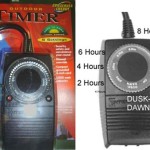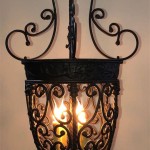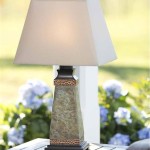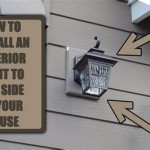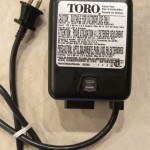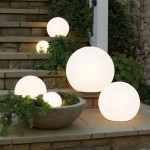How To Install Outdoor Step Lights In Concrete
Outdoor step lights enhance safety and add aesthetic appeal to any exterior staircase. Installing them in concrete requires careful planning and execution. This guide outlines the necessary steps for successful installation.
Planning and Preparation: Before beginning the installation process, several key factors need consideration. Determine the ideal light placement for optimal illumination and visibility. Measure the riser and tread dimensions to ensure adequate spacing between lights. Select lights specifically designed for outdoor use, verifying they are weatherproof and durable. Gather the necessary tools, including a hammer drill, masonry drill bits, wire strippers, a voltage tester, and safety glasses.
Marking and Drilling: Precise marking is crucial for proper light placement. Use a pencil or marker to indicate the desired location of each light fixture. The recommended position is typically centered on the riser, a few inches from the step's edge. After marking, carefully drill pilot holes into the concrete using a hammer drill equipped with a masonry bit. The diameter of the bit should match the size of the mounting screws or anchors provided with the light fixtures. Ensure the holes are deep enough to accommodate the anchors fully.
Wiring the Lights: Before proceeding with wiring, disconnect the power supply to the area where the lights will be installed. Consult local building codes for specific wiring requirements. Generally, low-voltage lighting is recommended for outdoor step lights. Run the low-voltage wiring from the power source to each light fixture location. If the wiring needs to be channeled through the concrete, use a chase or conduit to protect it. Consult a qualified electrician if unfamiliar with electrical wiring procedures.
Installing the Light Fixtures: Once the wiring is in place, insert the anchors into the drilled holes. Gently tap them with a hammer until they are flush with the concrete surface. Connect the wires from the light fixture to the low-voltage wiring, ensuring correct polarity. Use wire nuts to secure the connections. Carefully mount the light fixture onto the anchors, ensuring it sits securely against the concrete surface. Tighten the mounting screws according to the manufacturer's instructions, avoiding over-tightening.
Sealing and Finishing: To prevent water damage and ensure longevity, apply a silicone sealant around the base of each light fixture. This will create a waterproof barrier and protect the wiring connections. Smooth the sealant with a damp finger or a sealant tool for a clean finish. Once the sealant has dried completely, reconnect the power supply and test the lights. Verify that all lights are functioning correctly and providing adequate illumination.
Choosing the Right Light Fixtures: The selection of appropriate light fixtures significantly impacts both functionality and aesthetics. Consider the overall design of the outdoor space when choosing the style and finish of the lights. Opt for lights that complement the surrounding architecture and landscape. LED lights are energy-efficient and offer a long lifespan, making them a popular choice for outdoor lighting. Ensure the chosen fixtures are rated for wet locations and have a durable construction to withstand the elements.
Working with Existing Concrete Steps: Installing lights in existing concrete steps presents some unique challenges. If running wiring through the concrete is not feasible, consider using surface-mounted conduit or wiring channels. Choose light fixtures designed for surface mounting. Ensure the chosen method adheres to local building codes and electrical safety standards. Exercise caution when drilling into existing concrete to avoid damaging embedded utilities. Utilize a concrete scanner to locate any hidden pipes or wires before drilling.
Safety Precautions: Safety should be the top priority throughout the installation process. Always wear appropriate safety gear, including safety glasses and gloves. Disconnect the power supply before performing any electrical work. Follow the manufacturer's instructions carefully when handling power tools and electrical components. If unsure about any aspect of the installation, consult a qualified electrician or contractor.
Maintenance and Troubleshooting: Regular maintenance will ensure the longevity and optimal performance of the step lights. Periodically inspect the lights for any signs of damage or wear. Clean the lenses with a soft cloth to remove dirt and debris. Check the wiring connections for tightness and corrosion. If a light malfunctions, disconnect the power supply and troubleshoot the issue. Replace any damaged components as needed. If the problem persists, consult a qualified electrician.
Alternative Installation Methods: In situations where drilling into concrete is not feasible or desirable, alternative installation methods can be considered. Solar-powered step lights offer a wireless solution, eliminating the need for wiring. These lights are easy to install and require minimal maintenance. Adhesive-backed lights can be attached directly to the concrete surface, providing a quick and straightforward installation option. However, these lights may not be as durable as wired fixtures. Evaluate the specific requirements of the project and choose the most suitable installation method.

How To Add Lights In Concrete Steps Network

How To Add Lights In Concrete Steps Network

Let There Be Light Taking Concrete Lighting To The Next Level

How To Add Lights Existing Concrete Steps

How To Add Lights In Concrete Steps Network

How To Choose And Install Led Lights On Staircases Steps

Let There Be Light Taking Concrete Lighting To The Next Level

How To Choose And Install Led Lights On Staircases Steps

How To Create An Outdoor Stair Lighting Design Decksdirect

How To Install Under Stair Lighting 1000bulbs Blog

